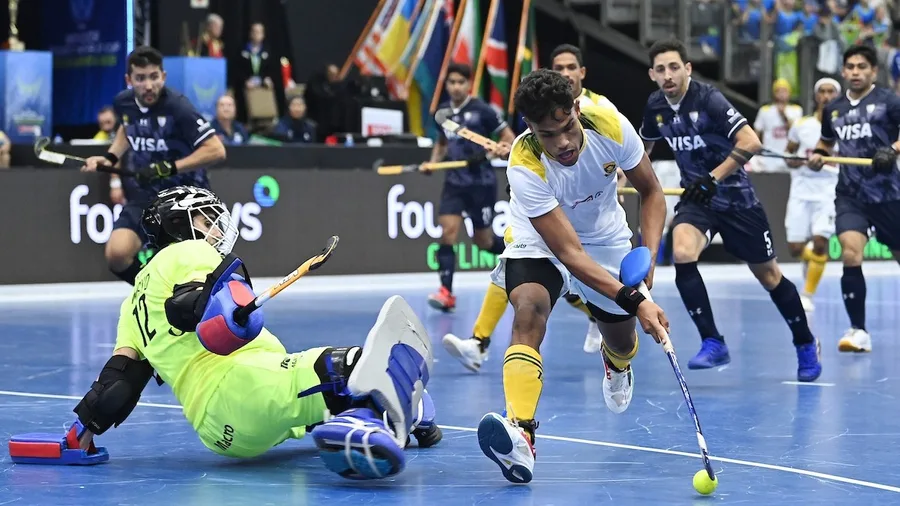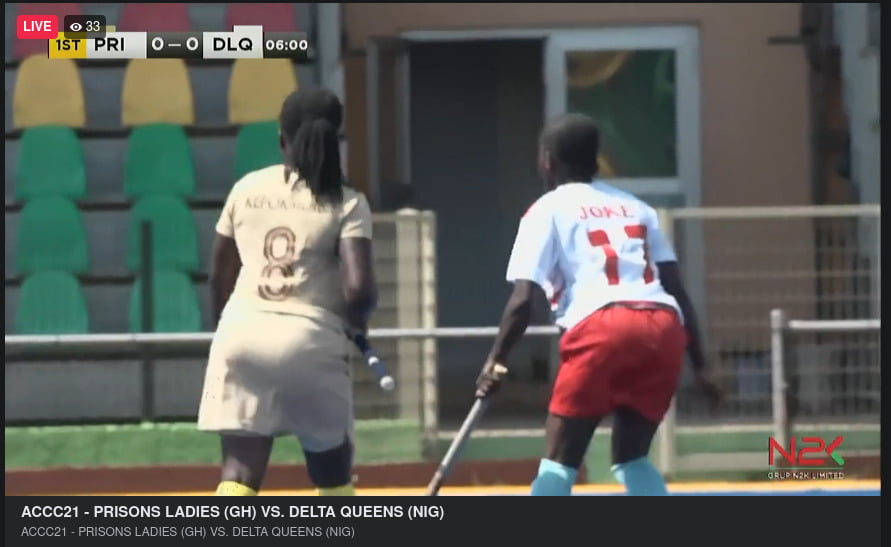With the FIH Indoor Hockey World Cup Croatia 2025 about to burst into action from 3-9 February, we present a quick study on indoor hockey, a dynamic, high-speed variation of traditional outdoor hockey that demands quick thinking, precise execution, and rapid decision-making. Played on a smaller, walled pitch with six players per team, indoor hockey offers a thrilling spectacle where speed and technical ability take center stage. While sharing many similarities with outdoor 11-a-side hockey, indoor hockey has unique rules and strategies that set it apart.
Playing Surface and Field Size
The indoor hockey pitch is rectangular in shape, with any indoor sports hall flooring appropriate to play on. The dimensions of the pitch are 40 meters long and 20 meters wide. There are boards placed on the side perimeters of the pitch (but not the backline) that keep the ball in play. The scoring circle has a 9 meter radius from the center of the goal-line and the penalty spot is marked 7 meters from the center of the goal-line.
Goals
The size of the goals in indoor hockey are smaller compared to outdoor hockey. The width of the goal is exactly 3 meters and it has a height of 2 meters. Goal-sideboards and goal-backboards are not necessary in indoor hockey.
Team Size and Game Duration
Indoor hockey teams consist of six players (five field players and a goalkeeper), compared to 11-a-side in outdoor hockey. The total size of a squad in indoor hockey is 12 players and rolling substitutions are permitted. Matches are also shorter, typically played in four quarters of 10 minutes each, leading to high-intensity action from start to finish.
No Hitting, Only Pushes
Perhaps the most fundamental rule difference is that players are not allowed to hit or sweep the ball in indoor hockey. Instead, only pushes are permitted, requiring players to develop strong wrist control and quick flicks to generate power. Lifting the ball is only permitted when a player attempts to score a goal from inside the scoring circle, by the use of a flicking motion. The flicking motion is defined as: raising the ball off the ground by placing the head of the stick under the ball and using a lifting movement.
Christopher Rühr, a key player for Germany’s men’s team, highlights this unique challenge: “Indoors, you’re obviously not allowed to hit or sweep, which means that the little flick just from the wrists needs to be quick and powerful in order to score goals. Defending-wise, being really low with a big span is a quality needed, as the attacker can’t lift the ball over your stick to win a duel.”
Fast-Paced Strategy and Close Control
With a smaller playing area and no lifted passes, indoor hockey emphasizes quick, precise passing and intelligent movement. Players need excellent stick skills to maneuver in tight spaces, constantly looking for gaps in the opposition’s defense.
Belgian Indoor Red Panthers star, Laurine Delforge, describes the tactical demands of indoor hockey: “Indoor hockey is a concentration of intensity, skill, and strategy. It’s all about speed of execution and precision. You have to be smart to use small spaces, be creative to surprise the opponent, and multiply quick passes to create chances.”
Tactical Play and Defensive Awareness
Unlike outdoor hockey, where long aerial passes and expansive play are common, indoor hockey requires players to be more compact and disciplined. Quick turnovers mean defenses must be alert at all times, with tight marking and low-body positioning critical for success.
Growing popularity of Indoor Hockey
Indoor hockey provides an exciting alternative to outdoor hockey in colder regions where playing conditions can be challenging in winter. The game’s high-energy nature and non-stop action make it a thrilling spectacle for fans, while the emphasis on technical skill helps players refine their abilities for both formats of the game.
As more nations invest in indoor hockey, the sport continues to gain traction worldwide. With the FIH Indoor Hockey World Cup showcasing the very best in the game, the format is proving to be a vital part of hockey’s evolution—fast, skillful, and always unpredictable!
The complete rules of Indoor Hockey can be found here.
For more information about the upcoming FIH Indoor Hockey World Cup Croatia 2025, click here.
Source: FIH.hockey




